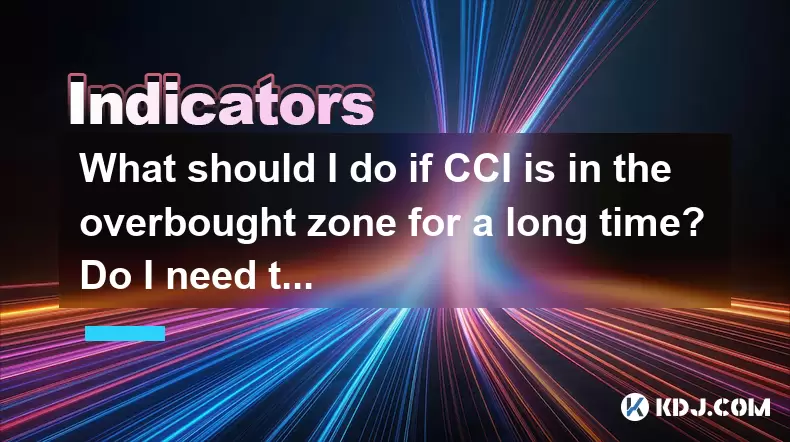-
 Bitcoin
Bitcoin $118200
0.49% -
 Ethereum
Ethereum $3580
0.33% -
 XRP
XRP $3.429
-0.49% -
 Tether USDt
Tether USDt $1.000
-0.05% -
 BNB
BNB $734.1
0.18% -
 Solana
Solana $177.7
0.26% -
 USDC
USDC $0.9999
-0.01% -
 Dogecoin
Dogecoin $0.2434
4.12% -
 TRON
TRON $0.3203
-1.58% -
 Cardano
Cardano $0.8334
1.59% -
 Hyperliquid
Hyperliquid $44.70
2.39% -
 Stellar
Stellar $0.4636
-1.10% -
 Sui
Sui $3.789
-0.43% -
 Chainlink
Chainlink $18.49
4.03% -
 Hedera
Hedera $0.2674
-0.08% -
 Avalanche
Avalanche $25.08
6.37% -
 Bitcoin Cash
Bitcoin Cash $520.4
1.12% -
 Shiba Inu
Shiba Inu $0.00001495
1.88% -
 Litecoin
Litecoin $112.5
9.34% -
 UNUS SED LEO
UNUS SED LEO $8.994
0.24% -
 Toncoin
Toncoin $3.209
-0.74% -
 Polkadot
Polkadot $4.393
2.95% -
 Uniswap
Uniswap $10.16
-0.07% -
 Monero
Monero $325.2
1.09% -
 Ethena USDe
Ethena USDe $1.001
0.00% -
 Bitget Token
Bitget Token $4.898
-1.03% -
 Pepe
Pepe $0.00001326
0.54% -
 Dai
Dai $1.000
0.02% -
 Aave
Aave $317.2
-0.43% -
 Cronos
Cronos $0.1214
0.07%
What should I do if CCI is in the overbought zone for a long time? Do I need to reduce my position?
When CCI stays overbought for weeks, it may signal a strong bullish trend but also a potential correction; consider other indicators and your risk tolerance before reducing your position.
May 22, 2025 at 10:28 pm

When dealing with the Commodity Channel Index (CCI) in the overbought zone for an extended period, it's crucial to understand the implications and potential actions you can take. The CCI is a versatile indicator used to identify cyclical trends in a cryptocurrency's price, and when it remains in the overbought zone, it often signals a strong bullish trend. However, this does not necessarily mean you should immediately reduce your position. Let's explore the situation in detail.
Understanding the CCI and Overbought Zones
The Commodity Channel Index (CCI) is a momentum-based oscillator used to determine when an asset is overbought or oversold. Typically, a CCI value above +100 is considered overbought, while a value below -100 is considered oversold. When the CCI remains in the overbought zone for a prolonged period, it suggests that the bullish momentum is strong and the price may continue to rise.
Analyzing the Duration of the Overbought Condition
The duration of the overbought condition is critical. If the CCI has been above +100 for a few days, it might not be a cause for immediate concern. However, if it persists for weeks or even months, it could indicate an impending correction. Long-term overbought conditions can lead to exhaustion in the bullish trend, making a price pullback more likely.
Evaluating Other Technical Indicators
Before deciding to reduce your position, it's essential to evaluate other technical indicators. Look at the Relative Strength Index (RSI), Moving Average Convergence Divergence (MACD), and Bollinger Bands to get a more comprehensive view of the market. If these indicators also suggest overbought conditions, the case for reducing your position strengthens.
Considering Market Sentiment and News
Market sentiment and news can significantly influence cryptocurrency prices. If the CCI is in the overbought zone due to positive news or strong market sentiment, the price may continue to rise despite the overbought condition. Therefore, staying informed about market developments and sentiment can help you make a more informed decision.
Assessing Your Risk Tolerance and Investment Goals
Your risk tolerance and investment goals should also guide your decision. If you are a conservative investor, you might consider reducing your position to mitigate potential losses. On the other hand, if you have a higher risk tolerance and are looking for long-term gains, you might decide to hold your position or even increase it.
Implementing a Position Reduction Strategy
If you decide to reduce your position, it's important to do so strategically. Here are some steps you can take:
- Assess your current holdings: Determine the total value of your position in the cryptocurrency.
- Decide on the reduction amount: Based on your risk tolerance and market analysis, decide what percentage of your position you want to reduce.
- Set a price target: Establish a price at which you will sell a portion of your holdings. This could be the current market price or a slightly lower price to ensure you can execute the trade.
- Place a limit order: Use a limit order to sell the specified amount of cryptocurrency at your chosen price. This helps ensure you get the price you want and avoids selling during a sudden market dip.
- Monitor the market: After reducing your position, continue to monitor the market and the CCI. If the overbought condition persists and other indicators suggest a potential correction, you might consider further reducing your position.
Using Stop-Loss Orders
Stop-loss orders can be a useful tool to manage risk when the CCI is in the overbought zone. By setting a stop-loss order, you can automatically sell your cryptocurrency if the price falls to a certain level, helping to limit potential losses. Here's how to set a stop-loss order:
- Determine the stop-loss price: Decide on the price at which you want to trigger the stop-loss order. This could be a percentage below the current market price or a specific support level.
- Place the stop-loss order: Enter the stop-loss order through your trading platform. Ensure you understand the platform's rules regarding stop-loss orders, as some may have specific requirements or fees.
- Monitor and adjust: Keep an eye on the market and adjust your stop-loss order if necessary. If the price continues to rise, you might want to move the stop-loss order higher to lock in more profits.
Considering Partial Profit-Taking
Another strategy to consider is partial profit-taking. If the CCI is in the overbought zone and you believe the price may correct soon, you can sell a portion of your holdings to secure some profits while leaving the rest to potentially benefit from further gains. Here's how to implement partial profit-taking:
- Determine the profit-taking percentage: Decide what percentage of your position you want to sell to take profits.
- Set a price target for profit-taking: Choose a price at which you will sell the specified percentage of your holdings. This could be the current market price or a slightly higher price to ensure you can execute the trade.
- Place a limit order for profit-taking: Use a limit order to sell the chosen percentage of your cryptocurrency at your set price.
- Monitor the remaining position: After taking partial profits, continue to monitor the market and the CCI. If the overbought condition persists, you might consider taking further profits or adjusting your strategy.
Frequently Asked Questions
Q: Can the CCI remain in the overbought zone indefinitely?
A: While the CCI can remain in the overbought zone for an extended period, it is unlikely to stay there indefinitely. Eventually, the market will correct, and the CCI will move back towards its neutral zone. However, the timing of this correction can be unpredictable, and it's influenced by various factors including market sentiment and external news.
Q: Should I use the CCI as my sole indicator for making trading decisions?
A: No, it's not advisable to rely solely on the CCI for trading decisions. The CCI is just one tool among many that can help you assess market conditions. Combining the CCI with other technical indicators, fundamental analysis, and market sentiment will provide a more robust basis for your trading decisions.
Q: How can I tell if the overbought condition is a result of a strong bullish trend or a potential bubble?
A: Distinguishing between a strong bullish trend and a potential bubble can be challenging. A strong bullish trend is often supported by positive fundamentals, such as increased adoption, technological advancements, or favorable regulatory news. In contrast, a bubble may be driven by hype and speculation without strong underlying fundamentals. Analyzing the broader market context and using a combination of technical and fundamental analysis can help you make this distinction.
Q: Is it better to reduce my position gradually or all at once when the CCI is in the overbought zone?
A: The decision to reduce your position gradually or all at once depends on your trading strategy and risk tolerance. Gradual reduction can help you manage risk and potentially benefit from any further price increases. However, reducing your position all at once can be more straightforward and may be preferable if you believe a significant correction is imminent. Consider your overall investment strategy and market conditions when making this decision.
Disclaimer:info@kdj.com
The information provided is not trading advice. kdj.com does not assume any responsibility for any investments made based on the information provided in this article. Cryptocurrencies are highly volatile and it is highly recommended that you invest with caution after thorough research!
If you believe that the content used on this website infringes your copyright, please contact us immediately (info@kdj.com) and we will delete it promptly.
- Tinubu, the North, and Appointments: Too Little, Too Late?
- 2025-07-20 03:20:15
- Stellar Blade Hacked: When Crypto Scams Target Your Favorite Games
- 2025-07-20 03:50:12
- MoonBull, Doginme, and Meme Coins: What's the Buzz in 2025?
- 2025-07-20 03:50:12
- Dogecoin's Wild Ride: Price Forecast & the Utility Sector Buzz
- 2025-07-20 03:55:12
- Tinubu's Appointments: A Northern Perspective
- 2025-07-20 03:55:12
- Tinubu's Northern Appointments: A Cynical Ploy or Genuine Inclusion?
- 2025-07-20 04:00:12
Related knowledge

Advanced RSI strategies for crypto
Jul 13,2025 at 11:01am
Understanding the Basics of RSI in Cryptocurrency TradingThe Relative Strength Index (RSI) is a momentum oscillator used to measure the speed and chan...

Crypto RSI for day trading
Jul 12,2025 at 11:14am
Understanding RSI in the Context of Cryptocurrency TradingThe Relative Strength Index (RSI) is a momentum oscillator used to measure the speed and cha...

Crypto RSI for scalping
Jul 12,2025 at 11:00pm
Understanding RSI in the Context of Crypto TradingThe Relative Strength Index (RSI) is a momentum oscillator widely used by traders to measure the spe...

What does an RSI of 30 mean in crypto
Jul 15,2025 at 07:07pm
Understanding RSI in Cryptocurrency TradingRelative Strength Index (RSI) is a momentum oscillator widely used in cryptocurrency trading to measure the...

What does an RSI of 70 mean in crypto
Jul 13,2025 at 06:07pm
Understanding the RSI Indicator in Cryptocurrency TradingThe Relative Strength Index (RSI) is a widely used technical analysis tool that helps traders...

Does RSI work in a bear market for crypto
Jul 16,2025 at 01:36pm
Understanding RSI in Cryptocurrency TradingThe Relative Strength Index (RSI) is a momentum oscillator used by traders to measure the speed and change ...

Advanced RSI strategies for crypto
Jul 13,2025 at 11:01am
Understanding the Basics of RSI in Cryptocurrency TradingThe Relative Strength Index (RSI) is a momentum oscillator used to measure the speed and chan...

Crypto RSI for day trading
Jul 12,2025 at 11:14am
Understanding RSI in the Context of Cryptocurrency TradingThe Relative Strength Index (RSI) is a momentum oscillator used to measure the speed and cha...

Crypto RSI for scalping
Jul 12,2025 at 11:00pm
Understanding RSI in the Context of Crypto TradingThe Relative Strength Index (RSI) is a momentum oscillator widely used by traders to measure the spe...

What does an RSI of 30 mean in crypto
Jul 15,2025 at 07:07pm
Understanding RSI in Cryptocurrency TradingRelative Strength Index (RSI) is a momentum oscillator widely used in cryptocurrency trading to measure the...

What does an RSI of 70 mean in crypto
Jul 13,2025 at 06:07pm
Understanding the RSI Indicator in Cryptocurrency TradingThe Relative Strength Index (RSI) is a widely used technical analysis tool that helps traders...

Does RSI work in a bear market for crypto
Jul 16,2025 at 01:36pm
Understanding RSI in Cryptocurrency TradingThe Relative Strength Index (RSI) is a momentum oscillator used by traders to measure the speed and change ...
See all articles

























































































